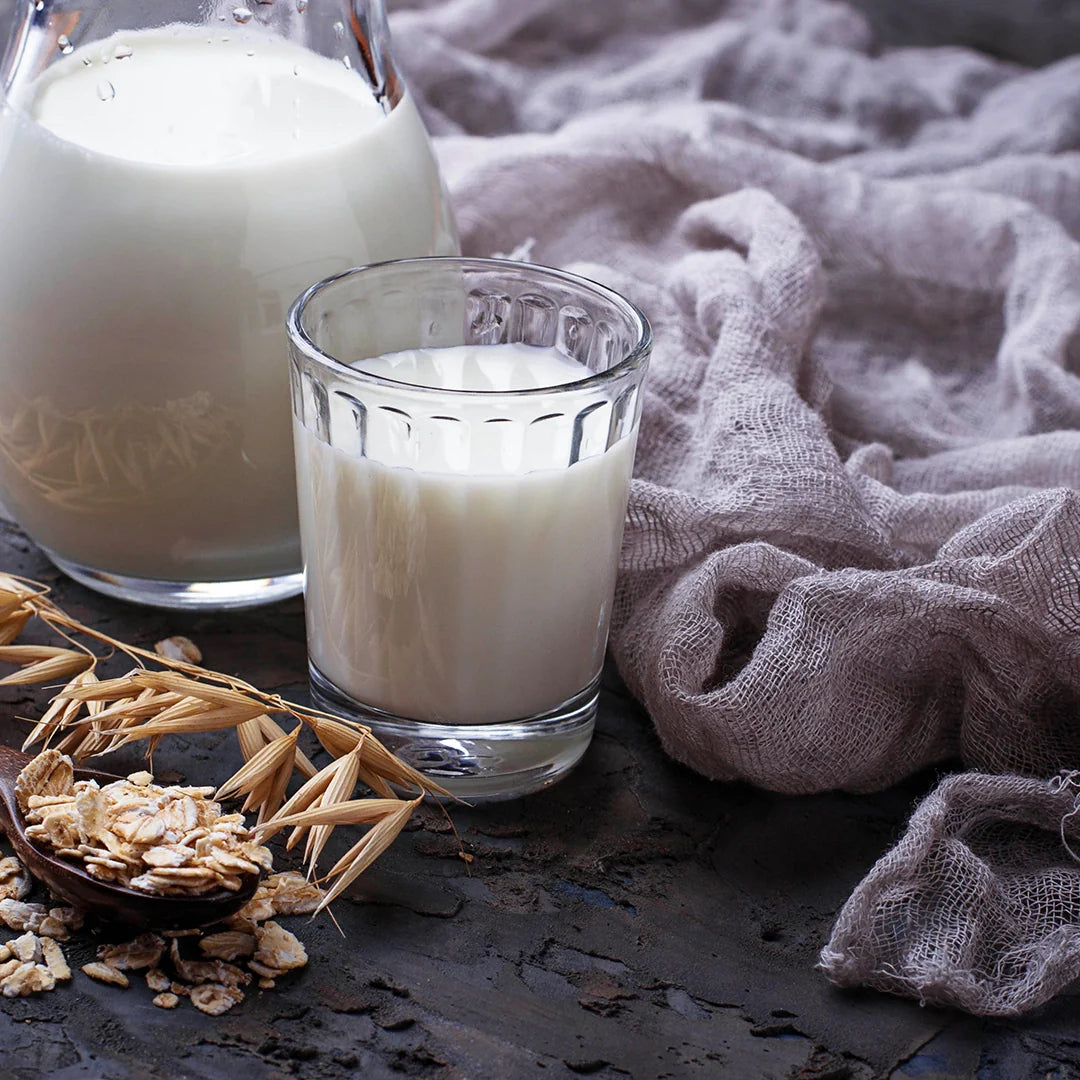
What is the history of milk?
Share
History of Milk: Did Ancient Humans Drink It and Should We Today?
When discussing milk, many focus on modern debates like lactose intolerance or formula feeding, but the history of milk goes far deeper than grocery store aisles. Humans have a fascinating relationship with milk, not just from animals but initially from their own mothers. Let’s dive into how milk has played a crucial role in human evolution, nutrition, and culture, from ancient breastfeeding practices to the domestication of dairy animals.
Breastfeeding in Ancient Times: The First Source of Milk
It’s a fact of life: all humans start by drinking milk from their mothers. But what many don’t realize is that ancient humans breastfed their children far longer than we do today. Studies of ancient skeletons have revealed fascinating details about early breastfeeding habits:
Teeth ‘time capsule’ reveals that 2 million years ago, early humans breastfed for up to 6 years
-
Extended Breastfeeding Periods:
Research shows that prehistoric children likely breastfed until the age of 6 or even 7 years old. While they would have begun eating solid foods around the age of 1-2, they continued receiving nutrients from their mother’s milk for years. This was essential for survival in a world where food scarcity was common, and milk provided critical calories, fats, and immunity-boosting benefits. -
Language Clues:
Even modern languages retain echoes of this ancient practice. For instance, in Norwegian, the term “melketenner” (milk teeth) refers to baby teeth, which typically fall out around ages 6-7. This linguistic relic hints at a time when milk consumption was closely tied to early childhood development.
The Decline of Extended Breastfeeding
As societies evolved, extended breastfeeding became less common. Written records from more recent history, such as those from ancient Greece and Egypt around 4,000 years ago, show that cultural norms shifted:
-
Wet Nursing:
Among royalty and nobility, breastfeeding was often outsourced to "wet nurses"—women hired to nurse infants when the mother was unwiling or unable to do so. This trend persisted for centuries, even into the 20th century, as societal perceptions of breastfeeding changed. For example:- In ancient Egypt, wet nurses were seen as valuable members of households, with inscriptions honoring their role.
- In Greece, it was fashionable for wealthy mothers to delegate breastfeeding duties to others, as they focused on societal roles.
-
Modern Decline:
By the mid-20th century, formula feeding became widespread, especially after World War II, when industrialized nations marketed formula as a modern and convenient alternative. Today, some mothers don’t breastfeed at all, relying on formula from birth.
The Transition to Animal Milk: When Did Humans Start Drinking It?
The next big question: When did humans start drinking milk from animals? The domestication of animals like cows, goats, and sheep marked a significant turning point in milk's history.
-
Domestication of Dairy Animals:
Archaeological evidence suggests that humans began domesticating animals for milk production around 8,000–10,000 years ago in regions like the Fertile Cresent (modern-day Middle East). Early farmers discovered they could milk cows, goats, and sheep to supplement their diets, especially in times of food scarcity. -
Cultural Adaptations:
Ancient pastoral societies relied heavily on animal milk and its byproducts like cheese and yogurt. This was particularly important in places where agriculture was difficult due to harsh climates, such as:- Central Asia: Nomadic tribes drank fermented mare’s milk (kumis).
- Northern Europe: Dairy products like butter and cheese became staples due to the abundance of cattle and cooler climates that supported milk preservation.
Lactose Intolerance: Ancient and Modern Perspectives
Modern discussions often highlight lactose intolerance, which is the inability to digest lactose, the sugar in milk. Interestingly, most ancient humans were lactose intolerant:
-
Genetic Evolution:
Lactase persistence (the ability to digest milk into adulthood) developed relatively recently, around 4,000–6,000 years ago. This genetic mutation emerged in certain populations particularly in Europe, the Middle East, and parts of Africa, where dairy became a survival advantage. Other regions of the world never developed this trait and is why come ethnicities have a hard time processing milk even today. -
Cultural Workarounds:
Cultures that lacked the lactase persistence mutation developed fermented milk products like yogurt, kefir, and cheese. These processes break down lactose, making milk easier to digest.
Milk in Ancient Cultures
Milk and dairy have played vital roles in cultures across the world, both as a dietary staple and a symbol of fertility and nourishment:
-
Egyptian Civilization:
Milk was associated with Hathor, the godess of motherhood and fertility. Cattle were revered, and milk was a central part of religious offerings. -
Greek and Roman Societies:
While milk wasn’t a staple for adults, cheese was highly prized. Hippocrates, the “Father of Medicine,” praised the health benefits of fermented milk. -
Indian Culture:
Milk has been central to Indian diets for millennia, especially in the form of yogurt (dahi) and clarified butter (ghee). It also holds religious significance in Hindu rituals.
Milk in the Modern World
Today, milk is widely consumed, but its role in human diets continues to evolve:
- Industrial Dairy Farming: Mass production and pasteurization have made milk more accessible but also raised ethical and environmental concerns.
- Plant-Based Alternatives: As lactose intolerance and vegan diets gain attention, alternatives like almond, oat, and soy milk are becoming more popular.
Conclusion: Milk’s Timeless Role in Human History
From extended breastfeeding in ancient times to the domestication of dairy animals and the rise of plant-based alternatives, milk’s history reflects the adaptability of human diets and cultures. Ancient humans not only drank milk from their mothers but also innovated ways to harness milk’s benefits from animals, shaping diets and traditions that persist to this day.
Milk remains a symbol of sustenance and innovation—a reminder of humanity’s enduring relationship with nature and nourishment.
